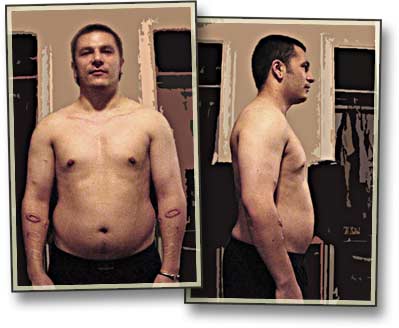
“The wise man should consider that health is the greatest of human blessings. Let food be your medicine.”
– Hippocrates
As asked many times over, how does one become overweight to the point of obesity? Though I am far from a doctor or scientist, after a little research it becomes clear that this issue is akin to the debate of which came first — the chicken or the egg. Does it come down to a simple matter of control of our eating patterns, or are we prey to companies who create high-fat, high-sugar foods without our knowing it?
We’d all like to think that it takes a profoundly lazy person to be so inactive and eat so poorly that they gain a substantial amount of weight. Of course, for some that is the case, but by and large I believe that people do care about their health. Unfortunately, many of us live in a time where it is difficult to eat healthy meals and get as much exercise as we should be. However, many people consider themselves healthy (or at least not unhealthy) when in fact they quite often are not. It seems that many people are quite content to be a little overweight, and of course they have that right. Many will argue that one does not need to be lean to be healthy, and in certain circumstances I will agree — I have seen it with my own eyes, in the case of a successful middle-aged marathon runner who is more than fifty pounds overweight. But this is the exception to the rule. I had always imagined that I was in better shape than I was. I figured that just because I had gained a few (that turned out to be almost thirty) pounds didn’t mean that I wasn’t in decent shape. I knew there were muscles under there somewhere. Of course, I hadn’t seen them in a few years, and now that I think about it, climbing a couple of sets of stairs was becoming more and more difficult. You know the rest of the story.
To get back on track, we get fat from a combination of lack of proper exercise and terrible eating habits, the latter of which is the topic of this month’s article.
According to the Journal of the American Medical Association, very close to two-thirds of all American adults are overweight, and nearly half of those who are overweight are obese (“extremely or grossly overweight”), accounting for a full 61.3 million people over the age of twenty.
According the BME Megasurvey, a little over one third of those surveyed describe their weight as being ‘overweight,’ with just 2.3% of those surveyed indicating that they would describe themselves as being “extremely overweight.” I may not be a doctor, and I’m certainly no statistician, but quite simply there seems to be a very wide gap between Americans who think they are overweight (36.8%), and those who actually are overweight (64.5%). To extrapolate, nearly half of overweight people are in denial about being overweight, which is a telling sign of our times. It doesn’t take a leap of faith to figure out that on the whole, we don’t eat nearly as healthy as we should. Overweight and obesity-related illness cost American taxpayers $122.9 billion per year, second only to smoking-related illness. So the next time you ask somebody to ‘butt out,’ don’t be surprised if they ask you skip seconds 😉
But how can we, frankly? Take a look in your cupboards and count how many foodstuffs are processed, preserved, contain added sugars and a trillion other chemicals you can’t pronounce. I am positive that it will outnumber the amount of fresh food you have in your refrigerator. But you’re not unique, of course. Unless you live on a farm and can grow and harvest your own food, you will be consuming food with these additives. It’s just the way it is, and it won’t change anytime soon.
It’s up to you to change.
By purchasing fresh food and produce, you benefit in ways you’d never imagined — from supporting local farmers to sending a message that you won’t tolerate (or at least won’t consume — which means lost income for corporations) the sheer amounts of added sugars, colours, preservatives, and pesticides that come with the food you’re eating. It’s your choice, and ultimately, your health.
Diet
The average person’s daily caloric requirement is between 1600 and 2200 calories. I’m not going to bore you with more statistics, but suffice it to say that many of us are not eating a well-balanced diet including choices from all of the food groups. While the Food Guide Pyramid has come under fire recently for various reasons, it’s recommendations are correct supposing that you live a moderately active lifestyle, which it is obvious that most of us don’t. Diet fads have come and gone, and most of you have probably tried one or two yourselves, but unless it is nutritionally balanced, invariably it will not work. Though vegans and vegetarians are stereotyped as being frail and skinny, there is some truth to that. It is very difficult to consume an adequate amount of protein (which helps build muscle) without eating animal products — very difficult, but not impossible*. This is especially true if you hope to lead a very active lifestyle. There are many supplements out there that will help you balance your diet, but they are just supplements, and do not take the place of ‘whole’ foods.
* Editor’s note: I began my exercise program about the same time as Dustin, and in that time period have dropped my body fat level from 23% to 18%, and have also put on 16 pounds of lean muscle mass. I eat a very strict vegan diet (high protein from beans and so on), take no supplements of any kind (including protein drinks), and have had no difficulty in maintaining and gaining mass.
To be more active than your average person (who, as we’ve seen, isn’t very active at all) and not consume animal products takes some serious dedication. In fact, there is a small but growing number of vegetarian and vegan bodybuilders who compete in world-class events such as the Mr. Natural competitions. There are approximately 6000 “natural” amateur bodybuilders in the United States.
I suppose I should talk about the Atkins diet, the eating plan that proposes to cut out carbohydrates and recommends increasing your amount of protein. The short-term numbers indicate that many people have been able to lose significant amounts of weight in this manner. While losing weight is a good start to becoming healthier, it certainly won’t make you healthy. To be healthy you must also exercise at least moderately, and to do that you must take in a certain amount of carbohydrates. It seems that most who are on the Atkins diet are simply attempting to shed a few pounds, but those who believe that they can get fit may be in for a rude awakening. I’m glad to see people on the road to weight-loss, but I’d rather see them on the highway to fitness. The Atkins plan is no easy task — it takes a life-long dedication to watching exactly what you eat, and really affords little room for getting into shape because of the lack of carbohydrate intake. On the other hand, if you were to eat a well-balanced diet (including the odd piece of cake) and exercise just three days per week, you’d be in much better physical shape, though you may not lose as much weight (partially because muscle weighs significantly more than fat). Several professional fitness experts I’ve spoken to have referred to the Atkins diet as the Fatkins diet, and now you know why.
In my first meeting with my personal trainer, he informed me that I needed to increase my caloric intake from roughly 2000 calories per day to 3000. In other words, eat 50% more food. Which actually sounded pretty good to me, until I had to eat that much for more than just a couple of days. After figuring out how much protein I’d have to consume (one gram for every pound of lean muscle; about 135), I decided to purchase and start drinking protein powder shakes. I looked around until I found the powder with the highest concentration of protein, and started drinking one or two shakes per day, depending on the day of the week and how I feel about drinking the most disgusting liquid I’ve ever had the misfortune of meeting. I can be very picky about the textures of foods (I will never, ever eat or drink anything with pineapple or avocado), and this stuff is near the top of the list of worst to consume. It’s worth the sacrifice, however, since the 60g of protein I get from one shake (500ml with skim milk) means two less cans of tuna or two less portions of chicken per day, which really helps. I’m still working the kinks out of my diet, and am hoping to get some variety in there somewhere. Unfortunately, eggs don’t agree with me in numerous ways, so my consumption of them has to be limited.
Here is a sample from my food log from the first week of my training. Keep in mind that I am not a giant (I’m barely even short) and this amount of food requires some serious effort:
8:30am: half cup oatmeal, 500ml protein shake in skim milk with banana and three strawberries
12:30pm: BBQ hamburger with small garden salad, 350ml iced tea
5:00pm: Half turkey and ham sub on wholewheat bread with cheese and mayo and veggies, 500ml chocolate milk
8:00pm: Other half of sub sandwich, 250ml water
10:30pm: Chicken breast with hot peppers, green peas, 250ml protein shake with a half banana and three strawberries
This is in addition to the normal two liters of water daily. At first that part was difficult because of water retention, but is now quite easy, and as a side effect I don’t need to drink nearly as much water during my workouts because I am already hydrated. I am also beginning to lose some of that ‘water weight,’ though that will take some time.
At this point, I will soon be attempting to cut down the fat in my diet (without sacrificing protein) to shed some pounds. On the counter at my gym sits a yellow-orange squishy lump, which I was told today was one pound of (simulated) fat. I immediately thought of the 30 or so pounds of that stuff dispersed under my skin. If you saw that lump, you’d be at the gym with me tomorrow morning.
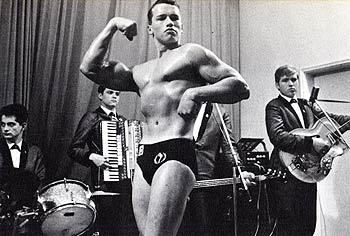
Arnold Schwarzenegger posting at age sixteen, as seen in his 1977 book The Education of a Body Builder.
Progress
In the weeks since my first official day of training, July 14, my overall strength has increased by 79.28%. I can bench press 62% more weight, I can ‘calf raise’ twice as much as when I started, and I can squat 244% more weight than in my first week. I’ve always been one for numbers, and these help, but beyond all of that I feel outstanding. I’m sure you’ll read that line every time I write a new column.
My measurements have also increased, in some cases substantially:
Thigh: increased 2.75″ to 24″
Calf: increased 3″ to 17.5″
Chest: increased 4.5″ to 41.5″
Waist: increased 1″ to 37″ (not so good, but lower back muscles are developing)
Bicep: now at 14″ (previous measurement long-forgotten)
That’s a total (not including biceps) gain of 11.25″ in just six weeks.
At this point, I have completed approximately seventeen one-hour sessions with my trainer, and this Wednesday I will be signing up for thirty more. Over the coming months we will see each other less and less while I spend more and more time getting fit at the gym. When we both agree on a time, I will start training four days per week (two days upper body, two days lower) instead of the current three, where I am performing a full-body workout. In recent weeks, as the intensity increases, I am able to exercise for longer periods of time, but each workout takes a lot out of me, to the point where I have come very close to throwing up. By splitting up the routines into upper and lower body I should be able to focus more on some areas than others, and give attention to the spots that really need it. Every week I am learning more and more about what I’m doing — including how to work smarter instead of harder — and my body is becoming accustomed to the routine. Every day I am better able to isolate certain muscles, and at the end of every week I can easily see the development of certain areas, which for me is a great motivator.
Before I sign off I’d like to propose a challenge to everybody reading this: For the next week, I challenge you to stop eating before you feel full at every meal. In some Eastern cultures it is customary to stop eating when you feel “80% full”. If everybody did this, we’d certainly not be seeing the problems with obesity that we do. I guarantee you’ll feel much better by the end of the week, and you just may be inspired enough to get outside and play.
You can thank me later.
![]()
![]()
Dustin Sharrow
Next month I’ll take a look at the history of bodybuilding.
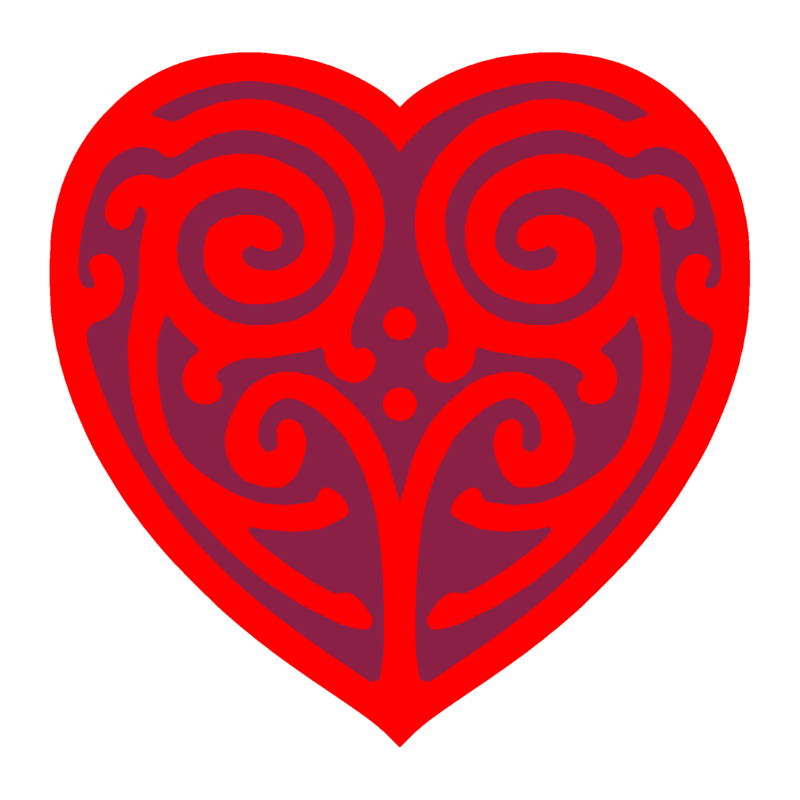
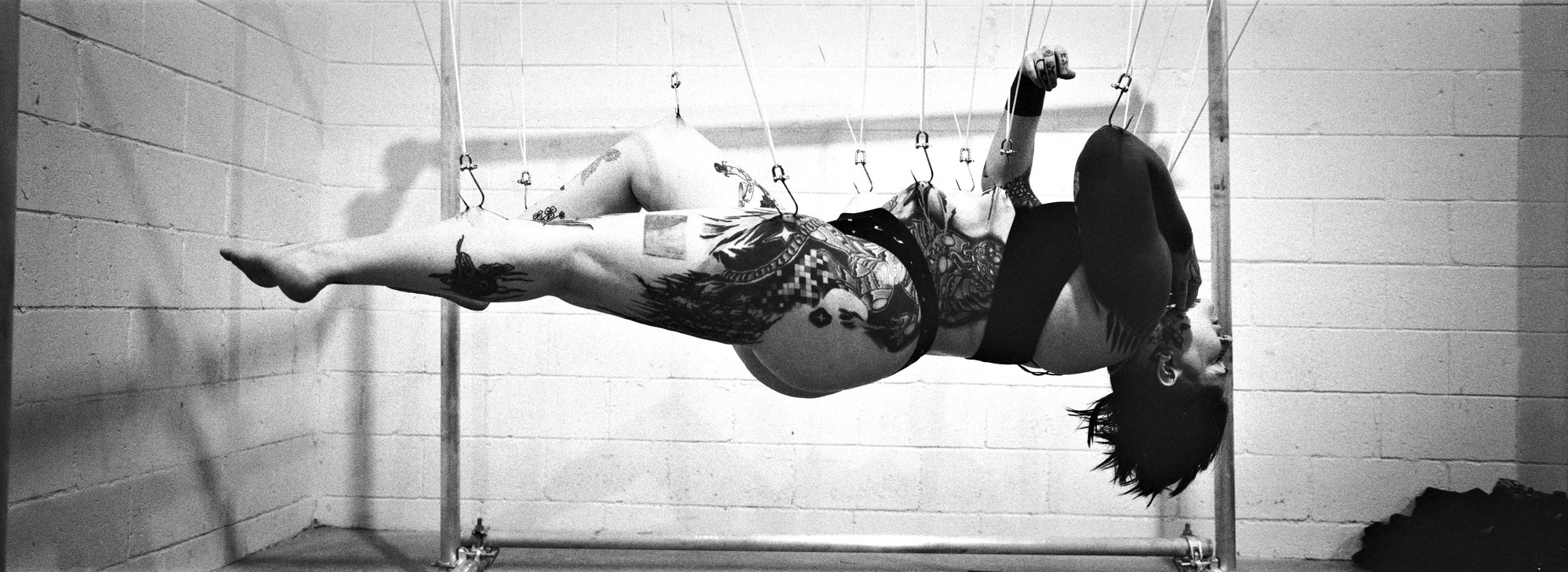
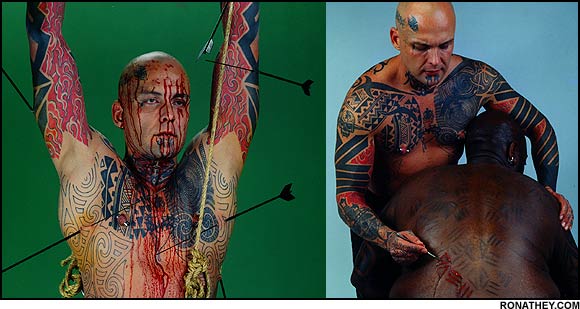
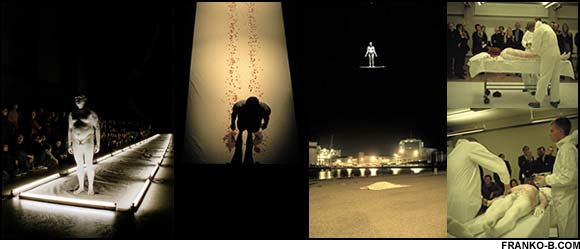
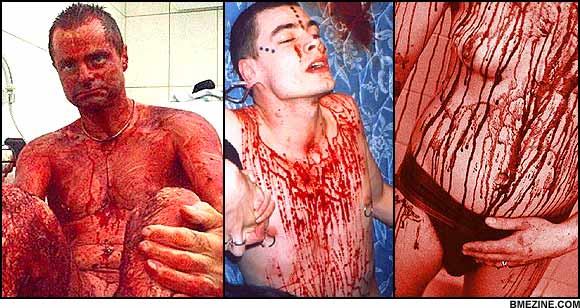
 Jason Oliver is currently working on his BA (Hons) Graphic Fine Art course in London, UK. His main areas of concern are ritual, body modification, and performances linking the two. He is researching social taboos and the general public’s response to direct actions onto the body and has a special interest in the use of blood, both in art and in ‘tribal’ rituals and how it acts as different signifiers depending on cultural context.
Jason Oliver is currently working on his BA (Hons) Graphic Fine Art course in London, UK. His main areas of concern are ritual, body modification, and performances linking the two. He is researching social taboos and the general public’s response to direct actions onto the body and has a special interest in the use of blood, both in art and in ‘tribal’ rituals and how it acts as different signifiers depending on cultural context. Blake’s book, A Brief History of the Evolution of Body Adornment in Western Culture: Ancient Origins and Today is available from his website,
Blake’s book, A Brief History of the Evolution of Body Adornment in Western Culture: Ancient Origins and Today is available from his website,  The grandson of dental surgeon, noted socialite, and traveller Dr. Naomi Coval, Blake Andrew Perlingieri was inspired by his grandmother’s travels to remote tribal areas in the early to middle parts of the 20th century.
The grandson of dental surgeon, noted socialite, and traveller Dr. Naomi Coval, Blake Andrew Perlingieri was inspired by his grandmother’s travels to remote tribal areas in the early to middle parts of the 20th century.